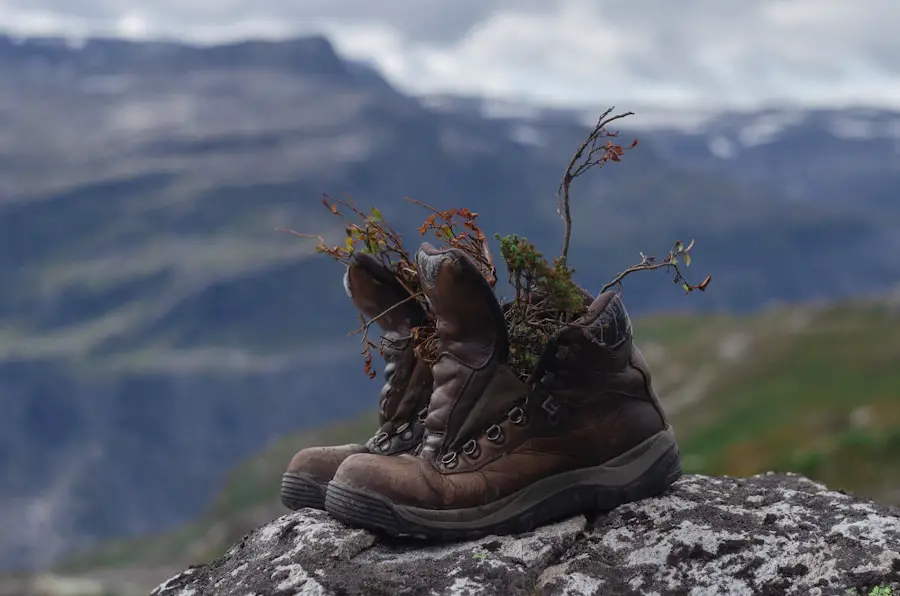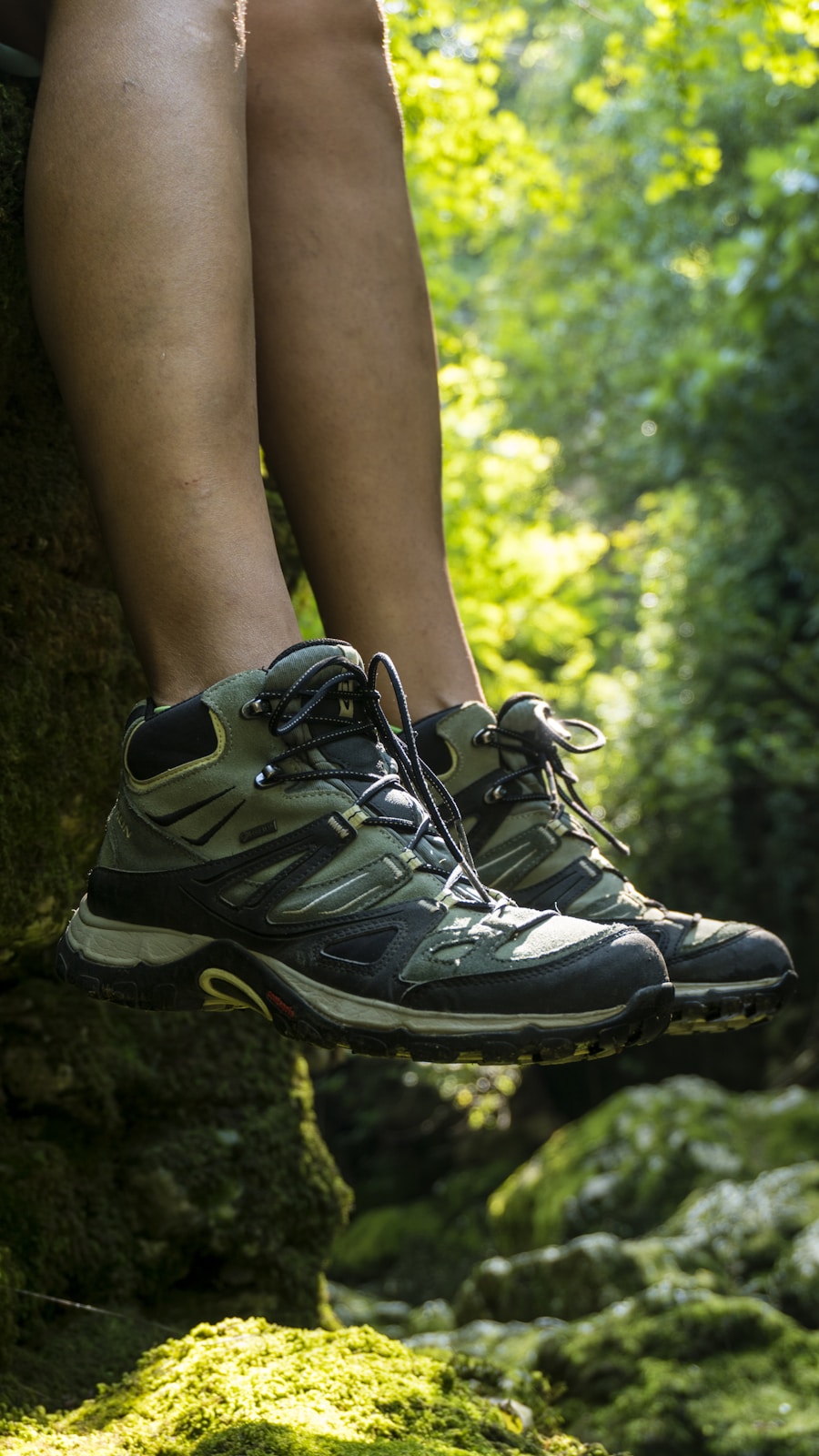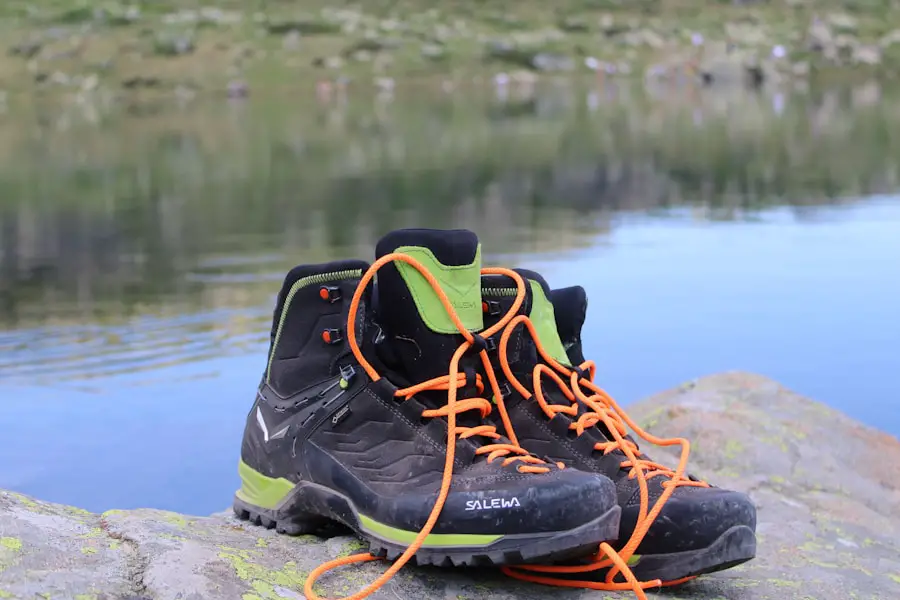Before embarking on any hiking adventure, it is crucial to assess your specific needs and preferences. Every hiker has unique requirements based on their experience level, the type of trails they plan to tackle, and the duration of their hikes. For instance, a casual day hiker may prioritize comfort and lightweight footwear, while a seasoned backpacker might seek out boots that offer enhanced support and durability for multi-day treks.
Understanding these nuances can significantly influence your choice of hiking footwear. Additionally, consider the climate and weather conditions you are likely to encounter. If you frequently hike in wet or muddy environments, you may need shoes that can handle moisture effectively.
Conversely, if your hikes are often in hot, dry conditions, breathability becomes a key factor. By taking the time to evaluate your hiking needs, you can make informed decisions that will enhance your overall experience on the trail.
Key Takeaways
- Determine your hiking needs based on the type of terrain, distance, and weather conditions you will encounter.
- Choose the right material for your hiking boots based on factors such as breathability, water resistance, and durability.
- Finding the perfect fit is crucial for comfort and preventing blisters or injuries during your hike.
- Consider the terrain you will be hiking on and choose boots with appropriate traction and ankle support.
- Look for hiking boots that provide the support and stability you need for your specific hiking activities.
- Consider waterproof and breathable options to keep your feet dry and comfortable in various weather conditions.
- Prioritize durability and longevity when selecting hiking boots to ensure they can withstand the wear and tear of your adventures.
- Explore budget-friendly options that still meet your hiking needs without compromising on quality and performance.
Choosing the Right Material
The material of your hiking footwear plays a pivotal role in determining its performance and comfort. Common materials include leather, synthetic fabrics, and mesh, each offering distinct advantages and disadvantages. Leather is renowned for its durability and water resistance, making it an excellent choice for rugged terrains and inclement weather.
However, it can be heavier and less breathable than other materials, which may not be ideal for warmer climates or long-distance hikes. On the other hand, synthetic materials such as nylon or polyester are often lighter and more breathable, providing comfort during extended wear. These materials tend to dry faster than leather, making them suitable for wet conditions.
Mesh panels are frequently incorporated into synthetic designs to enhance ventilation, allowing for better airflow and moisture management. Ultimately, the choice of material should align with your hiking style and the environments you plan to explore.
Finding the Perfect Fit

Achieving the perfect fit is paramount when selecting hiking footwear. Ill-fitting shoes can lead to discomfort, blisters, and even injuries during your hike. To ensure a proper fit, it is advisable to try on shoes at the end of the day when your feet are slightly swollen from daily activities.
This will give you a more accurate representation of how the shoes will feel during a hike. When trying on hiking shoes or boots, pay attention to several key areas: the toe box should allow for some wiggle room without being overly spacious; the heel should fit snugly without slipping; and the arch support should align with your foot’s natural contours. It is also beneficial to wear the same type of socks you plan to use on your hikes when trying on footwear.
This will help you gauge how the shoes will feel in real-world conditions. Remember that different brands may have varying sizing standards, so it’s essential to try multiple options to find the best fit.
Considering the Terrain
| Terrain Type | Percentage of Earth’s Surface |
|---|---|
| Mountains | 20% |
| Plains | 30% |
| Deserts | 17% |
| Plateaus | 10% |
| Forests | 31% |
The terrain you plan to hike on significantly influences your choice of footwear. Different trails present unique challenges that require specific features in your shoes or boots. For example, if you are hiking on rocky or uneven surfaces, you will need footwear with robust outsoles that provide excellent traction and stability.
Look for shoes with deep lugs that can grip various surfaces effectively. Conversely, if your hikes involve well-maintained paths or flat terrain, lighter shoes with less aggressive tread patterns may suffice. Trail runners are often favored for these types of hikes due to their lightweight design and flexibility.
Additionally, if you anticipate crossing streams or navigating muddy areas, consider footwear with drainage features or quick-drying materials to keep your feet comfortable and dry throughout your journey.
Support and Stability
Support and stability are critical components of hiking footwear, especially for those tackling challenging trails or carrying heavy packs. Hiking boots typically offer more ankle support than shoes, which can be beneficial for preventing sprains and providing stability on uneven ground. A boot with a higher cut can help stabilize your ankle during descents or when traversing rocky terrain.
In addition to ankle support, consider the midsole cushioning of your footwear. A well-cushioned midsole can absorb shock and reduce fatigue during long hikes. Some brands incorporate advanced technologies such as EVA foam or gel inserts to enhance comfort and support.
When selecting footwear, it’s essential to strike a balance between support and flexibility; too much rigidity can hinder natural foot movement, while too much flexibility may compromise stability.
Waterproof and Breathable Options

For hikers who frequently encounter wet conditions or stream crossings, waterproof footwear is a must-have. Many brands offer waterproof membranes such as Gore-Tex or proprietary technologies that keep water out while allowing moisture from sweat to escape. This feature is particularly valuable in maintaining comfort during prolonged hikes in damp environments.
However, it’s important to note that waterproof options can sometimes sacrifice breathability. If you often hike in hot climates or during summer months, consider footwear that strikes a balance between waterproofing and breathability. Some models feature a combination of waterproof materials with mesh panels that enhance airflow without compromising water resistance.
This ensures that your feet remain dry from external moisture while still allowing sweat to evaporate.
Durability and Longevity
Durability is a key consideration when investing in hiking footwear. The rigors of outdoor activities can take a toll on shoes and boots, so selecting a pair made from high-quality materials is essential for longevity. Leather boots tend to be more durable than their synthetic counterparts but may require more maintenance to keep them in optimal condition.
Examine the construction of the footwear as well; features such as reinforced toe caps and sturdy stitching can enhance durability significantly. Additionally, consider the outsole material; rubber outsoles are generally more resistant to wear and tear compared to softer compounds. Investing in durable footwear not only ensures that you get more miles out of your shoes but also enhances safety by reducing the risk of failure during critical moments on the trail.
Budget-Friendly Options
While high-quality hiking footwear can be an investment, there are budget-friendly options available that do not compromise on performance or comfort. Many reputable brands offer entry-level models designed for casual hikers or those just starting out in the sport. These options often incorporate essential features such as decent traction, adequate support, and reasonable durability without breaking the bank.
When shopping on a budget, consider looking for sales or discounts from outdoor retailers or exploring previous season models that may be offered at reduced prices. Online marketplaces also frequently have competitive pricing on hiking footwear. However, it’s crucial to prioritize fit and functionality over brand names; even budget options can provide excellent performance if they meet your specific hiking needs.
By being resourceful and informed about your choices, you can find quality hiking footwear that aligns with your budget while still enhancing your outdoor experiences.
When considering what is the best hiking boot for your outdoor adventures, it’s important to also think about other essential gear such as traveler pants, compact binoculars for hiking, and a portable white noise machine for travel. These items can enhance your overall hiking experience and make your time in nature more enjoyable. For more information on traveler pants, check out this article here.
Love travel? Join Our Facebook Community For More Tips.
FAQs
What are the key features to look for in the best hiking boot?
The best hiking boots should have a durable and waterproof outer material, a supportive and cushioned midsole, a grippy and durable outsole, and a comfortable and secure fit.
What are the different types of hiking boots available?
There are three main types of hiking boots: hiking shoes (low-cut), hiking boots (mid-cut), and backpacking boots (high-cut). Each type offers varying levels of ankle support and protection.
What are some popular brands known for producing the best hiking boots?
Some popular brands known for producing high-quality hiking boots include Salomon, Merrell, Vasque, Keen, Lowa, and The North Face.
How should I choose the right size for hiking boots?
It is recommended to try on hiking boots in the afternoon when your feet are slightly swollen, wear the type of socks you would typically wear while hiking, and ensure there is enough room in the toe box to wiggle your toes.
How should I break in a new pair of hiking boots?
To break in a new pair of hiking boots, wear them around the house for short periods of time, gradually increase the duration and distance of wear, and consider using specialized boot stretching techniques if needed.
How should I care for and maintain my hiking boots?
To care for and maintain hiking boots, it is important to regularly clean them, apply waterproofing treatments as needed, store them in a cool and dry place, and inspect them for any signs of wear or damage after each use.
